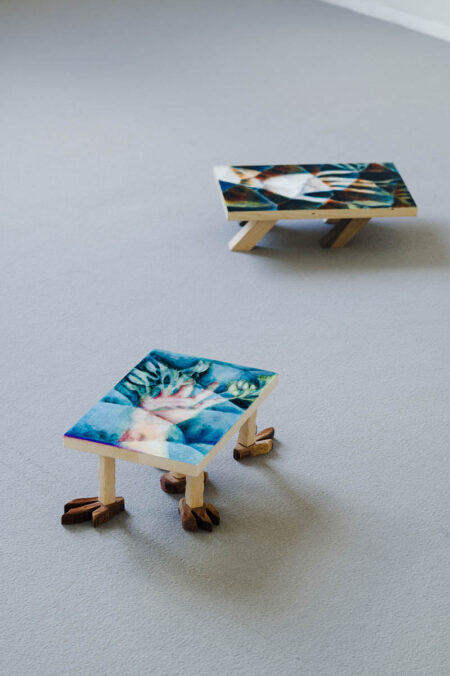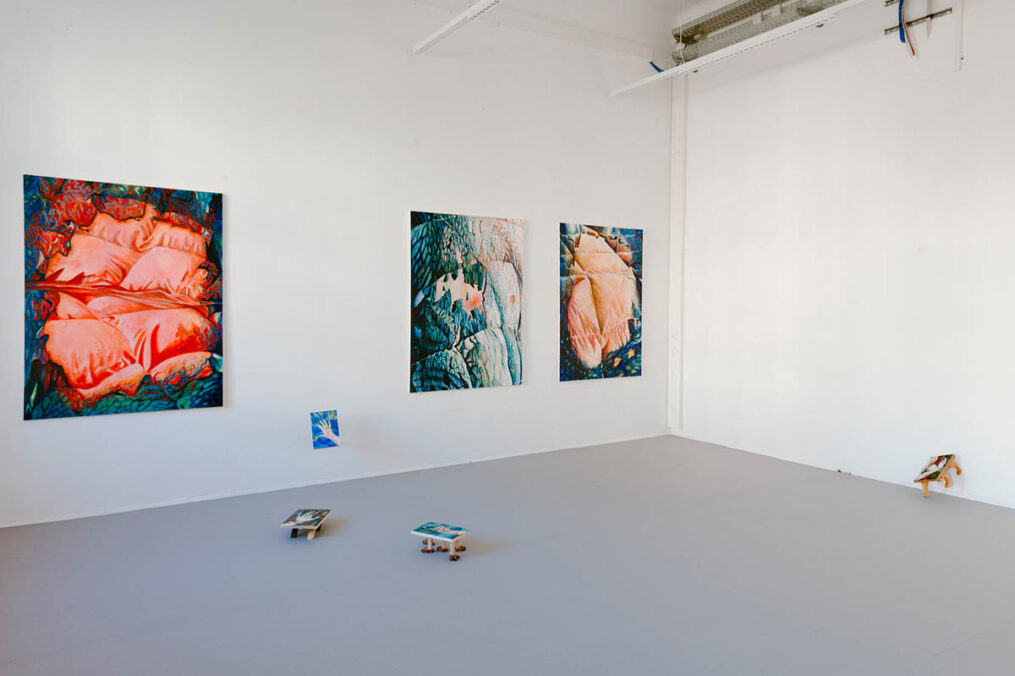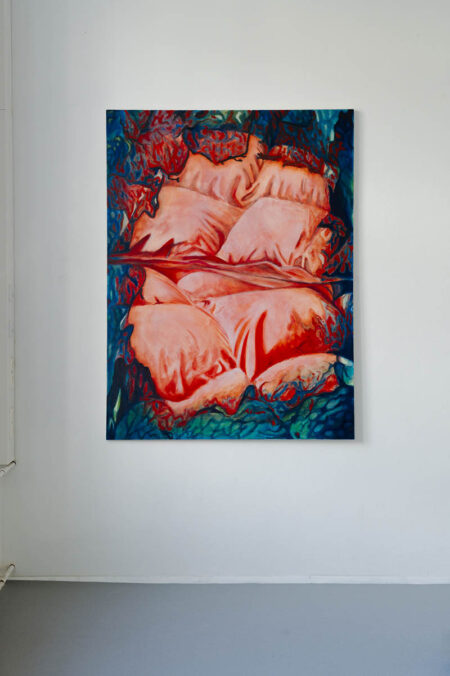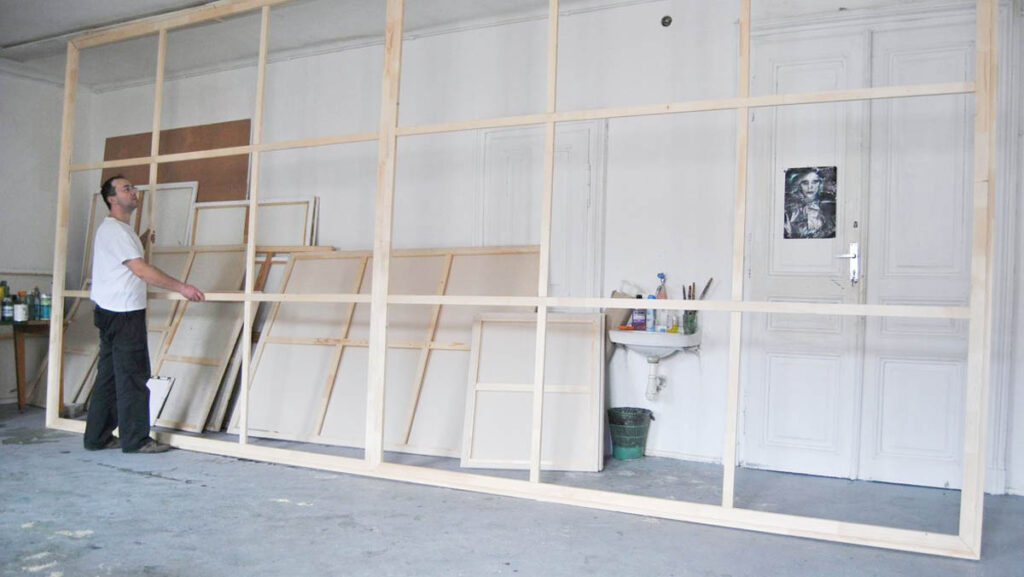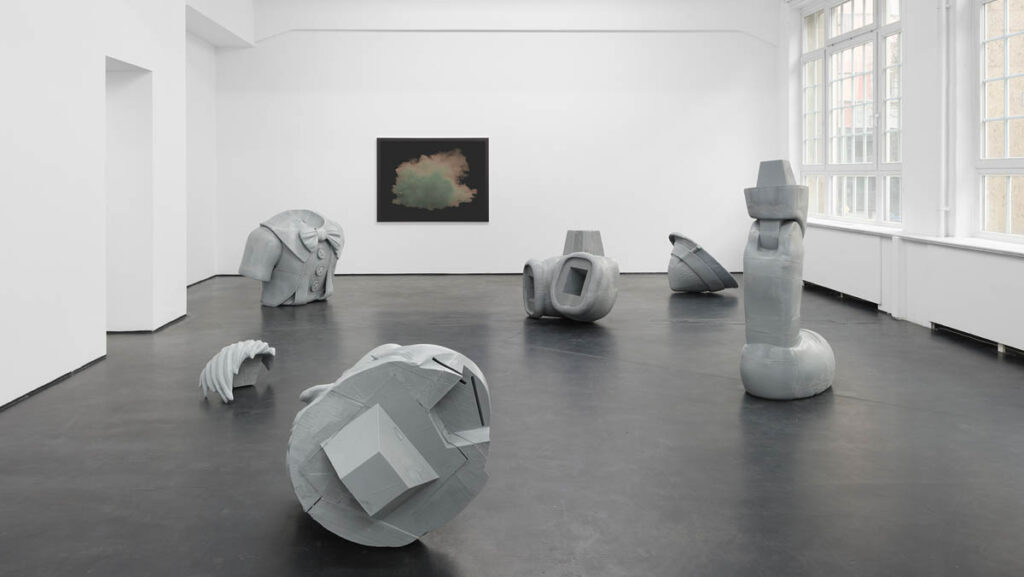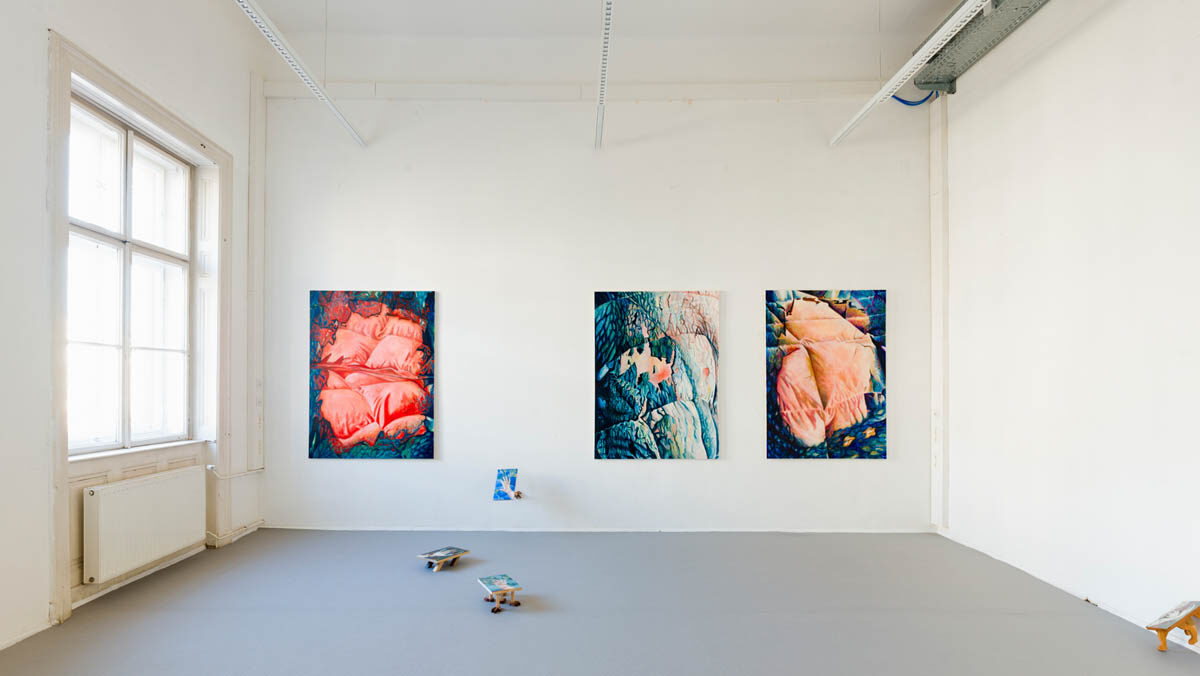
Her paintings depict metamorphoses of images and their spatial realms, blurring the lines between representation and reality. A delicate stroke of layered paint captivates the viewer’s perception, evoking feelings of comfort and security, as her grid-like patterns invite us into her profound aesthetic realm. Kling translates her aesthetic encounters into her formal language, welcoming us with vibrant colors. But what lies behind the softness, the movement, and the veil between her motives and the audience?
As she revealed in her diploma text, her journey into painting coincided with her German language learning. The absence of German vocabulary shaped her artistic voice, manifesting in her works. Dominant iconographic features include a quilted grid, tree bark textures, and hands, juxtaposed with bold colors.
Her wooden figures, each adorned with a painted hand, evoke a sense of movement within her studio space. Placing these abstract creatures within the exhibition space vividly engages the viewer. Kling’s artworks seem to reach out to us, inviting tactile exploration before intellectual contemplation. This dominance in the exhibition space echoes Rebekka Horn’s performance “Finger Gloves”, where Kling’s works assert their presence without enlarging her physical body.
Approaching the viewer both literally and metaphorically through painted hands, her artworks introduce a paradox. The hand, depicted on a down blanket-like grid, creates a layer between motive and viewer, presenting an intriguing duality.
The down blanket serves two pivotal functions: as a grid system supporting Kling’s motifs and thematically as a protective layer between her art and the audience. The quilt’s square texture preserves tactile experiences, representing Kling’s gentle approach to opening her art to the surroundings. Similar effects are found in tree bark, where softness gives way to a hardened surface.
The convergence of blanket and tree bark resembles skin, evident in Kling’s large paintings depicting a slow process of skin peeling, revealing her safety net: the down blanket. This association suggests a symbol of renewal or departure, where the crumbling bark redirects focus onto the blanket, elevating its significance.
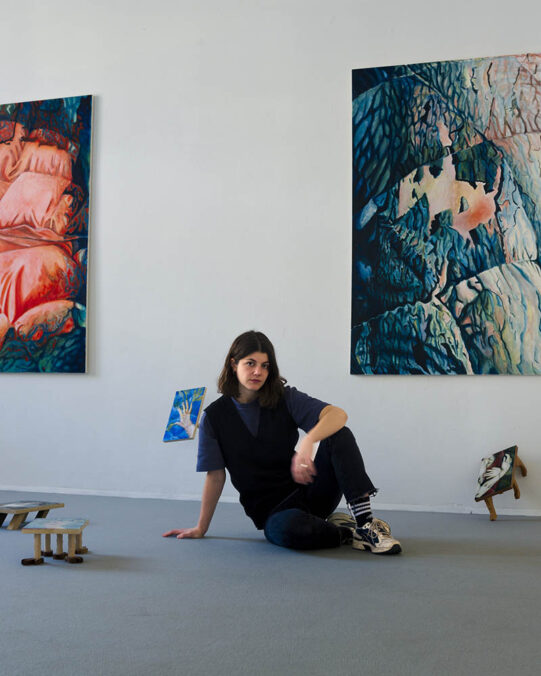
Emma Kling Photocredit: Lorenz Kunath
Even though Wittgenstein famously once said, “The limits of my language mean the limits of my world” Emma Kling defied such constraints. In overcoming language barriers, she forged a unique formal language in her art, expanding her world. Her creation of this new artistic language demonstrates her refusal to be confined by traditional linguistic boundaries, allowing her to express herself in boundless ways.
Emma Kling was born in Hungary and lives and works in Vienna. She has been studying painting in Judith Eisler’s class at the University of Applied Arts Vienna since 2018. Since 2020 she is represented by Galerie Rudolf Leeb.
Katharina Hoffmann is a curator, art critic and art historian. She is co-founder and was editor-in-chief of the polyphonic art criticism blog resonanzen.store and works as assistant curator for the contemporary collection of the Esterhazy Private Foundation. She lives and works in Vienna.




